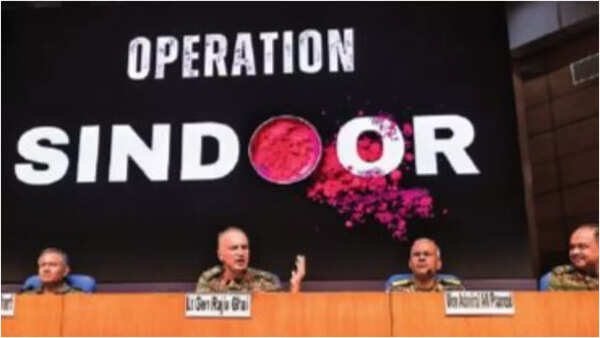Operation Sindoor: World news goes viral

Stanford University’s PhD candidate Samyukta Srivats is drawing widespread attention to his clear refutation of misunderstanding around the April 22 terror attack in Operation Sindhor, a compelling opinion piece by Samukta Srivatsa, Pahgam, Jammu and Kashmir and India’s later reaction.The attack took place in the Besaran Valley, a popular tourist destination, where armed terrorists allegedly sung Hindu citizens about their religious identity. Witnesses say the attackers used methods reminiscent of ISIS, forcing the victims to recite religious texts or prove circumcision. Twenty -six people died. Resistance Morcha, an offshoot of Lashkar-e-Tabiba in Pakistan claimed responsibility.Shrivatsa, currently pursuing PhD in Environmental Engineering at Stanford University, is a co-chairman of Stanford India Policy and Economics Club. Their educational work focuses on environment justice, emergency preparations and disaster response, especially for risky population such as unheard, low -income communities and racial minorities. His ongoing research has investigated the intersection of data science, traditional ecological knowledge and participation policy design to develop more equitable water and disaster management systems.Originally from Bengaluru, India, the work of Srivats is informed by his upbringing and living experiences. As a person living with the first generation immigrant and invisible disabled in the United States, she brings a deep personal and justice-oriented perspective to her scholarship and public engagement. He is committed to creating knowledge with communities and integrating indigenous knowledge with technical equipment.Vasudhiva Qutumbakam citing his faith – the world is a family – in response to the “dangerous distortions” of the Shwagam terror attack, Shivata wrote the viral essay. He dismissed efforts to attract false equivalence with the Gaza struggle or to frame murders as a task of resistance. “Peace can never be made on wrong information,” he wrote.His article systematically destroys four widely operated myths: that the attackers were freedom fighters; He was called Pakistan without; He is targeting India citizens; And that Kashmir remains a colony.

Armed forces press conference on operation in New Delhi on Sunday
Lieutenant Vinay Narwal, a naval officer on honeymoon, among the victims of the name, and Syed Adil Hussain Shah, were a local, who died while protecting others. Shrivats pointed to a long record of supporting Pakistan’s cross -border terrorism, referring to photographic evidence of state honor by Pakistani leaders and to kill terrorists.He also criticized Pakistan’s actions after India’s retaliatory attacks on 7 May, including alleged use of civil aircraft as a human shield and shelling of populated areas such as Poonach. In contrast, India has described its attacks as “accurate and non-esclery”, which only targets terrorist infrastructure.This article reflects the history of 1947 in Kashmir for the migration of more than 350,000 Kashmiri Pandits during the 1980s and the 1980s rebellion of the 1980s and the 1990s rebellion. “India is home to the third largest Muslim population in the world,” he wrote, opposite to Pakistan’s non-Muslim population.Srivats concluded, “Sad events in the role of Pahgam and Pakistan in the war were not the functions of political rebellion.” “She was the functions of religious extremism and terrorism. Peace demands truth – not selective narratives – and courage to say violence.”Although no official institutional comments have been made, this piece continues to broadcast widely into academic, migrant and diplomatic circles, in which many people refuse to indulge in their clarity, compassion, and ideological relativism. Srivatsa’s voice – lies in both harsh scholarship and living experience – has become one of the most compelling in recent years to emerge in international discourse on India, Pakistan and Kashmir.




